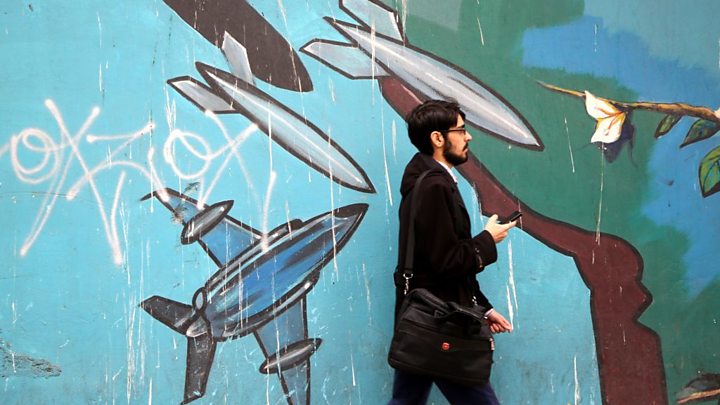The US is to send additional troops to the Middle East to counter the "ongoing threat posed by Iranian forces", the acting defence secretary says.
Congress has been notified about the plans, Patrick Shanahan said in a statement. Troops, fighter jets and engineers will all be deployed.
President Donald Trump announced the move earlier on Friday. He said the deployment was "relatively small".
Tensions rose this month, and the US sent an aircraft carrier to the Gulf.
The US has also deployed more planes to the region in recent days, with officials saying there was a threat from Iran-backed forces in Iraq.
But only on Thursday, Mr Trump said he did not think more troops were needed.
"I don't think we're going to need them," he told reporters. "I really don't. I would certainly send troops if we need them."
What is the latest US move?
In his statement, Mr Shanahan said he had "approved a request from the combatant commander for additional resources" in the region.
He said the move was intended to "safeguard US forces given the ongoing threat posed by Iranian forces, including the IRGC [Iran's Revolutionary Guard Corps] and its proxies."
Mr Shanahan said that "additional intelligence, surveillance, and reconnaissance aircraft" would be deployed as well as a team of engineers. He said a fighter aircraft squadron would also be sent.

Media playback is unsupported on your device
The IRGC is the most elite military unit in Iran. Last month, the US designated it as a foreign terrorist organisation.
Earlier on Friday, President Trump told reporters outside the White House that a "relatively small" deployment had been approved.
"We want to have protection in the Middle East," he said, adding that the extra troops would be "mostly protective."
A military boost amid high tensions
The additional 1,500 troops will add to the more than 50,000 US military personnel already spread across the region.
The deployment, which is smaller than some of the numbers talked of earlier in the week, comes at a time of high tensions. US officials say there's been a spike in threats against American assets from Iran and its proxies.
The Pentagon is portraying this as a defensive rather than offensive move. Mr Shanahan said earlier this week that US action had already forced Iran to put its planned actions on hold.
President Trump, meanwhile, has indicated that he does not want a war with Iran. He's had to rein in more hawkish aides, such as his National Security Adviser John Bolton. But on Twitter he has sounded more impulsive, warning last weekend. "If Iran wants to fight that will be the official end of Iran. Never threaten the United States again!"
What is behind the tensions?
Tensions between the US and Iran began rising this month when Washington ended exemptions from sanctions for countries still buying from Iran. The decision was intended to bring Iran's oil exports to zero, denying the government its main source of revenue.
Mr Trump reinstated the sanctions last year after abandoning the landmark nuclear deal that Iran has signed with six nations - the five permanent members of the UN Security Council and Germany.
Iran has now announced it it will suspend several commitments under the deal.
The US has proceeded to send an aircraft carrier, B-52 bombers and a Patriot missile defence battery to the region because of "troubling and escalatory indications" related to Iran.
Earlier this month, four oil tankers in the Gulf of Oman were damaged in what the United Arab Emirates said were sabotage attacks while drone attacks on two oil pumping stations in Saudi Arabia by Yemen's Houthi rebels - who are supported by Iran - forced the temporary closure of a pipeline.
Iran has denied that it was behind the incidents.
https://www.bbc.com/news/world-us-canada-48404141
2019-05-24 18:11:15Z
52780302924096
Tidak ada komentar:
Posting Komentar